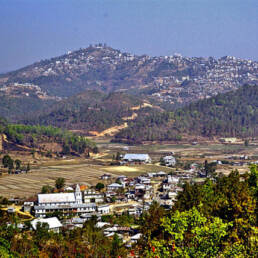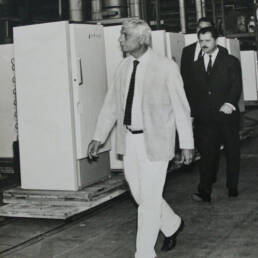A boy from a small village in Bengal, a lion tamer in Europe and a soldier in a Brazillian civil war. No, they aren’t three distinct people but the indomitable Suresh Biswas. Nearly 140 years ago, this young boy left India and carved himself an incredible path.
In 1894, Amrita Bazar Patrika, a leading daily from Calcutta, was reprinting news of the Brazilian Civil War from European newspapers. One piece attracted much attention. It mentioned that a Bengali man, Lieutenant Suresh Biswas, was fighting in the war.
Suresh Biswas was born in the Nadia district probably around 1861. By the time he was 15, he had proved himself as quite a rebel having converted to Christianity much to the displeasure of his devout Vaishnav parents. It is quite likely he was disowned by his family.
Soon, he left India. He possibly went to Rangoon and from there, sailed to Europe. Biswas, in 1881-82, featured in publicity material for the World’s Fair in Royal Agricultural Hall, Islington – his first appearance in media. A promotional material for the fair mentions him thus:
“Among the beasts are three lions, which leap and perform other acts at the bidding of their keeper, Suresh Biswas, who enters their cage. This exhibition, which takes place frequently, attracts great attention, and the daring young Hindi, master of the king of beasts, is loudly applauded for his display of temerity.”
A flyer for the fair also features an image of Biswas, seated at a cage door with the lions behind him.
Suresh Biswas ended up in the employ of a famous menagerie owner from Hamburg, Karl Hagenback. In 1885, he sailed to South America with a tiger and two lions to perform there. Soon, an elephant named Bosco also joined his entourage.
Biswas’ first performance was in Buenos Aires and the crowd loved it. His next show, in Rio de Janeiro, was attended by the royal family of Brazil. Biswas went back to Hamburg for a short while but soon returned to Brazil.
As it turns out, he’d fallen in love with Maria Augusta, the daughter of a Brazilian doctor. A dramatic change in profession followed. Maria apparently wished to see Suresh in uniform, as a soldier.
The undaunted Bengali, not one to back down from a challenge, went ahead and joined the PMDF – a military force set up to protect the Brazilian seat of government.
Corporal Biswas rose steadily through the rank. Some exceptionally courageous displays in the naval revolt at Nitheroy earned him a promotion to Lieutenant. Suresh Biswas married Maria Augusta and was a serving captain in the Brazilian forces when he passed away in 1905.
The reports and letters published in the Amrita Bazar Patrika created a major fan following for Biswas. In fact, in his last letter to his uncle, shortly before his death, Biswas mentioned receiving several letters from young men in Calcutta asking for ways to travel to South America.
At a time when there was consistent effort by the East India Co. administration to portray Bengalis as a cowardly, non-martial race, Suresh Biswas broke barriers and taboos and lived an exeptional life.
A life surely worth immortalizing on the silver screen – will an adventurous film-maker please raise their hand?
Sources: https://archive.dhakatribune.com/magazine/arts-letters/2016/07/02/captain-suresh-biswas-myth-reality
https://www.telegraphindia.com/culture/the-royal-bengal-lion-tamer/cid/1675615




